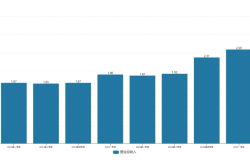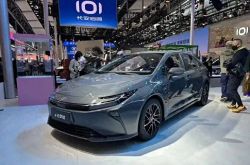Has the Once-Mighty Luxury Car Behemoth Lost Its Luster?
![]() 11/25 2025
11/25 2025
![]() 398
398
Fading from the Limelight
After a decade of robust development in the new energy vehicle sector, the automotive market has undergone a profound transformation. The definitions and boundaries of luxury brands have become increasingly blurred, with some traditional luxury names losing their former allure. Initially, American luxury brands carved out a niche amidst the dominance of German counterparts. However, they are now facing marginalization. Once-celebrated American luxury brands like Cadillac and Lincoln have faded from the public eye.
In mid-December of the previous year, Lincoln China addressed rumors about a potential merger with Ford China by clarifying that, starting from 2025, Lincoln's financial settlement system would be integrated into Ford China. This move aimed to streamline and consolidate the internal financial system for more efficient operations. Despite this integration, Lincoln China's various business segments remain unchanged, and it continues to operate independently in the Chinese market as a wholly-owned foreign enterprise under the Ford Group.
However, over the past year, Lincoln China has made few significant moves beyond occasional store openings as part of its "Spark Spreads Far and Wide" channel initiative launched in February.
Data reveals that in the first eight months of 2025, Lincoln's vehicle sales in China reached approximately 41,000 units, averaging around 5,000 units per month. August sales stood at 5,416 units, marking a year-on-year decline of 44.64%. Cadillac has faced a similar predicament. Despite announcing in June that the XT4 "became a hit shortly after its launch" and securing 2,000 orders, these figures pale in comparison to the current luxury vehicle sales landscape.
The shine of luxury brands has been steadily diminishing in recent years. Mercedes-Benz, BMW, and Audi have begun collaborating with Chinese intelligent driving companies to bridge the intelligence gap with Chinese brands. The evolution of old rivals and the strong presence of new entrants have left the already declining American luxury brands in a precarious position, surrounded by threats on all fronts.
Development Disconnect
Historically, American cars were often perceived as "high fuel consumption, high failure rates, and troublesome maintenance" in the minds of many consumers. Although American cars have made significant strides in fuel consumption control and reliability, the "solid and heavy" American luxury brands no longer align with current consumption trends amidst the continuous popularization of new energy and intelligence by Chinese brands.
Third-party statistical data shows that in October 2025, Cadillac sold 8,760 units, with a cumulative sales volume of 82,841 units from January to October. Based on the current development trajectory, annual sales are unlikely to surpass 100,000 units. Compared to last year's annual sales of 113,800 units, this represents another significant downturn. Lincoln's performance is even more sluggish: October sales were approximately 3,085 units, with a cumulative sales volume of 31,946 units from January to October.
Behind these dismal sales figures lies an even more severe collapse of the price system. In May of this year, Cadillac launched the all-new XT4 with a starting price slashed to 159,900 yuan. Since last year, Cadillac has repeatedly employed "fixed-price" marketing strategies, significantly lowering the prices of many models. For instance, the official guide price of the Cadillac CT5 was reduced by 70,000 yuan, from 289,700 yuan to a starting price of 219,700 yuan.
The newly launched Cadillac CT6 in October, with an official guide price ranging from 369,900 yuan to 429,900 yuan, directly offered a "fixed-price policy" ranging from 289,900 yuan to 329,900 yuan, equivalent to a direct discount of 80,000 yuan to 100,000 yuan. It even introduced a "Battle Damage Renewal Gift" – the ability to trade in for an equivalent new car if the vehicle damage exceeds 30% of the purchase price.
Similarly, Lincoln has also adopted "fixed prices." In March of this year, the Lincoln Z model was offered at a limited-time fixed price starting from 188,800 yuan, and the Lincoln Corsair was offered at a limited-time fixed price starting from 188,800 yuan.
Once the lofty "presidential limousines" of American luxury, these brands have now descended to the realm of "affordability" at tens of thousands of yuan. However, even with such price reductions, they have failed to halt the downward trend of declining sales and prices.
As Chinese brands continue to break through technological barriers, the rules of the luxury car market are being rewritten. Compared to German luxury brands that are still actively transforming, American luxury car brands have made minimal progress in electrification or intelligent transformation. After the disappearance of brand loyalty, the development of American luxury cars in the Chinese market has begun to fall into a vicious cycle of "price reductions - brand devaluation - further price reductions."
Dilemma Hard to Resolve
Faced with continuously declining sales, Cadillac has implemented corresponding reforms. Since the arrival of the new management team at SAIC-GM, they have proposed "Four Major Battles" internally, covering aspects such as product development, channel optimization, inventory clearance, marketing setup, and internal system optimization.
In terms of operations, SAIC-GM currently pursues a balance between volume and profitability, placing greater emphasis on the company's profitability. "In the past two years, we focused more on volume, but it was difficult to maintain a balance between volume and profit. Currently, all our operational goals and policies still prioritize profitability."
According to the data they disclosed, in 2024, Cadillac actively controlled its wholesale volume to restore channel health. By the end of 2024, the profitability of Cadillac dealers had increased by nearly 10%. However, judging from the performance data in 2025, Cadillac's "counteroffensive" seems to have fallen short of expectations.
Lincoln's actions have been even more conservative. According to Jia Mingdi, the President of Lincoln China, Lincoln's current focus is on ensuring dealer profitability. "Making choices is crucial. Strategy is not about what to do, but about what not to do. Lincoln aims to do just that and maintain strategic focus."
However, the fierce market competition clearly does not afford American luxury brands more time. Their continuously declining market share has made the presence of American luxury cars increasingly feeble.
In fact, not only luxury brands but also the overall development of American cars in China has not been smooth in recent years. American brands such as Chrysler and Jeep have already withdrawn from the Chinese market, while Ford and General Motors' growth trends are far inferior to those in the era of fuel-powered vehicles.
On the 18th, the US CNBC website reported that John Murphy, an automotive industry analyst at BofA Securities, stated at an event held by the American Auto Media Association that the "Big Three" of Detroit (i.e., General Motors, Ford Motor, and Stellantis) should "exit" the Chinese market "as soon as possible."
Other analysts believe that consumers now have strong "loyalty" towards Chinese independent brands, making it difficult for American car brands to withstand the strength of Chinese independent brands at present.
However, faced with the vast and deeply rooted Chinese market, most declining car brands still have confidence in reversing their sales situation in China and hope that their models can continue to make an impact in the Chinese market. Mary Barra, the Chairman and CEO of General Motors, previously expressed her hope to participate in this market in the right way.
As the world's largest automotive market, the purchasing power of Chinese consumers attracts all car brands. However, as the world's largest automotive producer and seller, the competitive intensity of the Chinese market far exceeds that of other countries and regions. American luxury brands have long lost their former glory, and from the current situation, there are no signs of a rebound in the short term.
This article is an original piece by China Auto News. We welcome sharing by our readers. If media outlets wish to reprint it, please indicate the author and source at the beginning of the article. We strictly prohibit any media or self-media from using any content of this article to create video or audio scripts. Violators will bear legal responsibility.
Will Fuel-Powered Vehicles Maintain Their Dominance?







